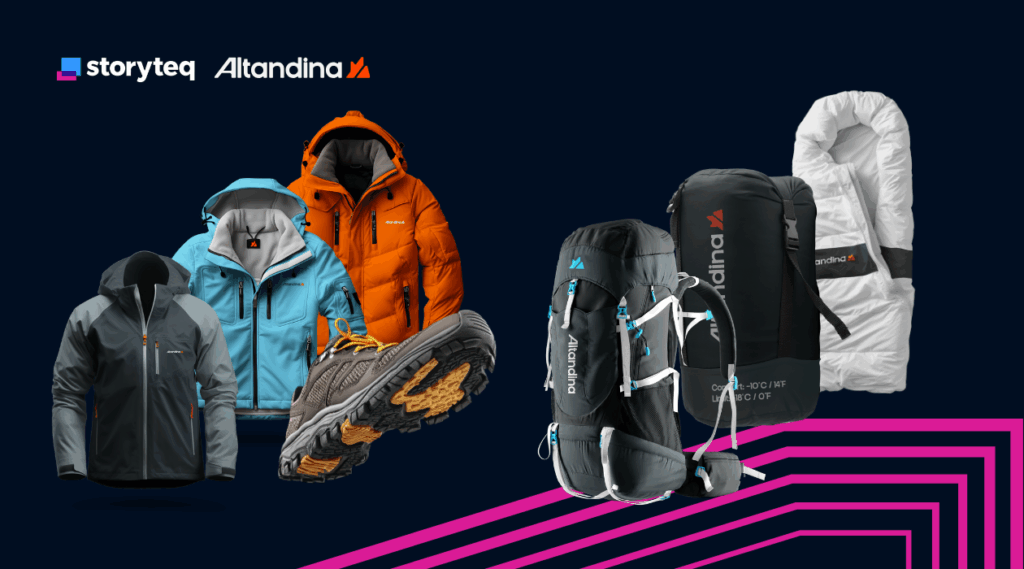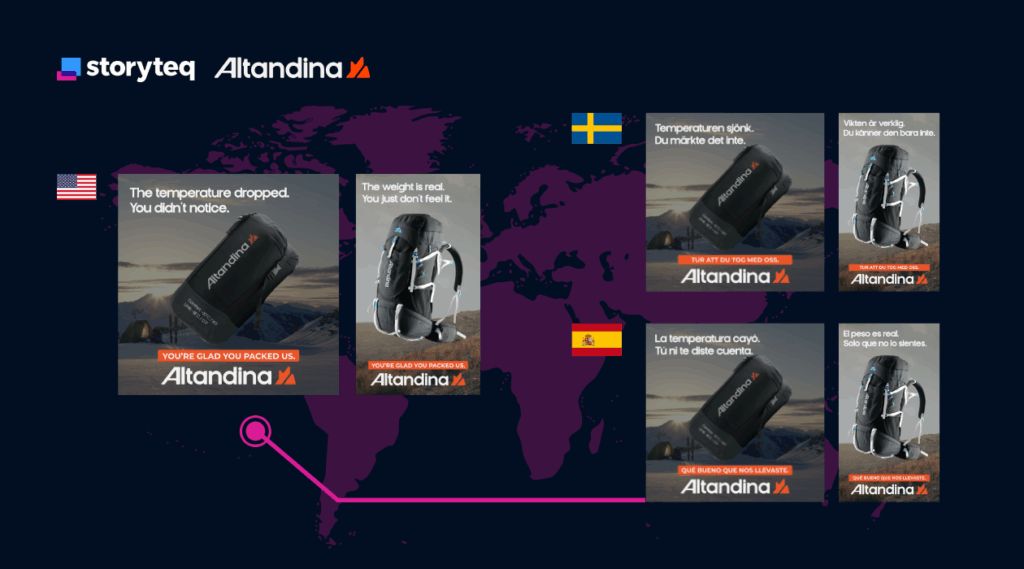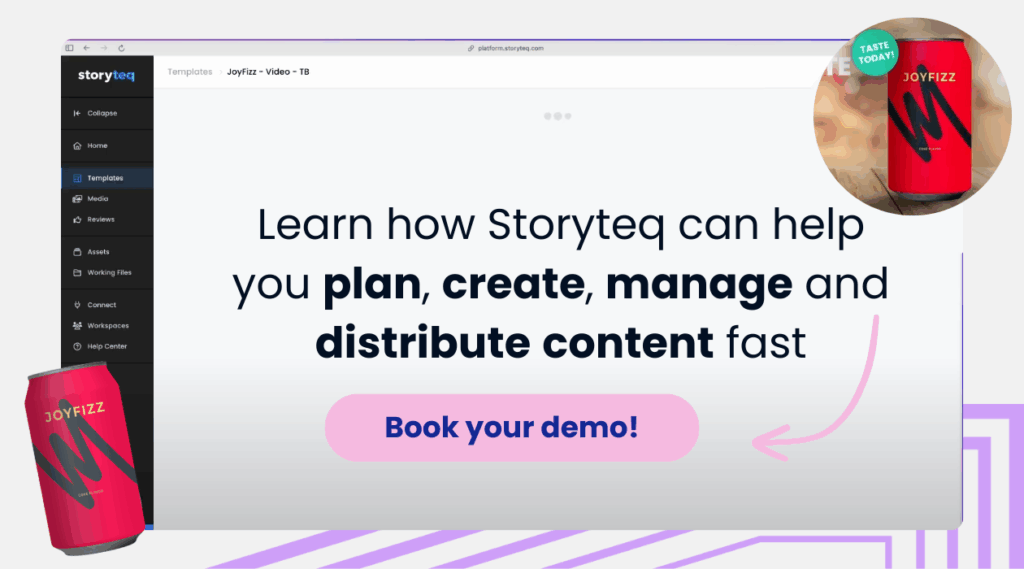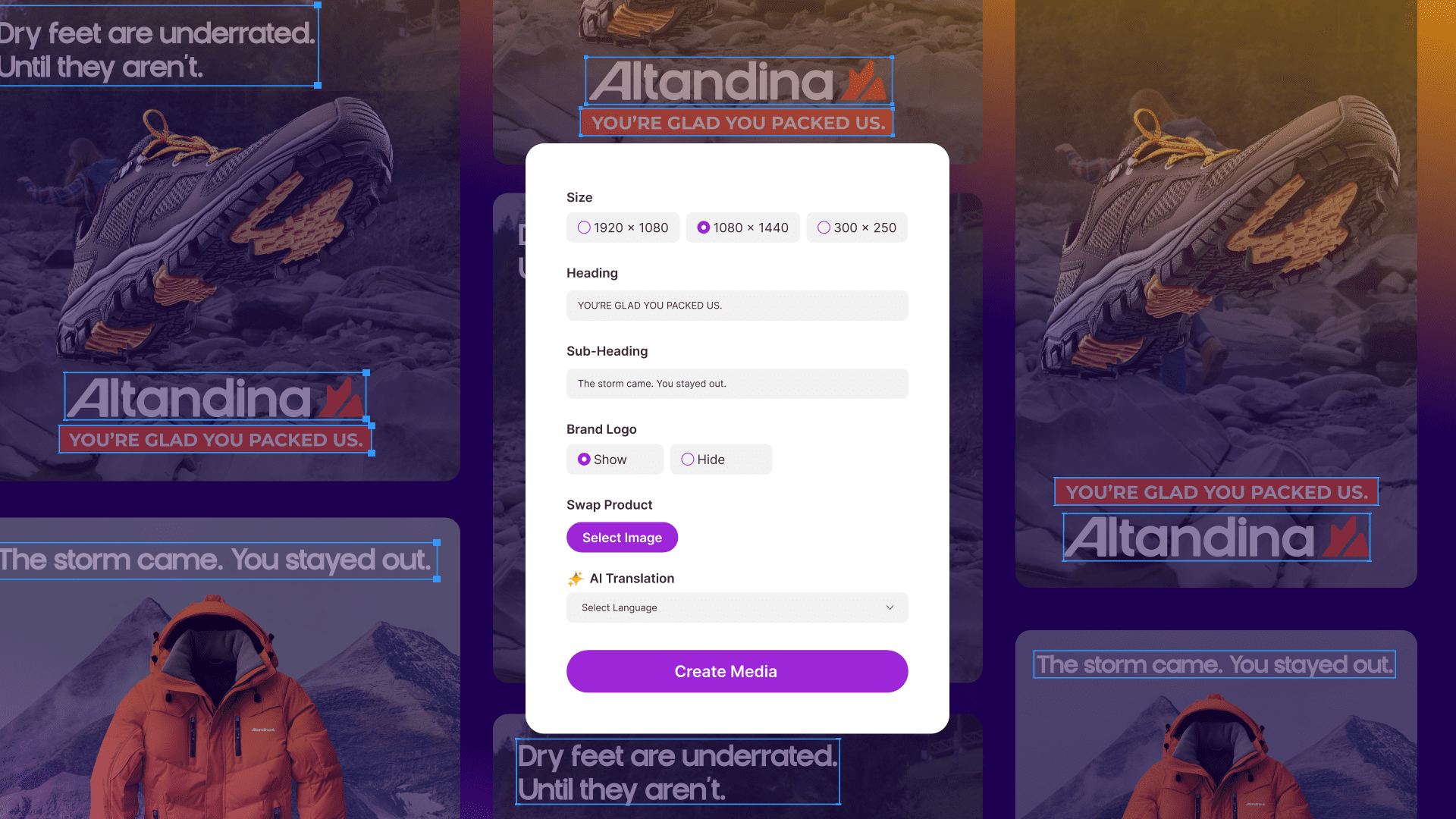Here’s the thing about today’s shoppers: They don’t want more content. They want content that’s relevant for them.
In fact, 81% of consumers expect personalized experiences from retailers.
Think about it. You’re browsing hiking socks on a sleek outdoor webshop. You get distracted (Slack ping, toddler tantrum, coffee call… you know the drill). A week later, your inbox lights up with an ad… for a waterproof jacket.
Wrong product. Wrong time. Wrong message.
It’s what happens when brands forget the power of context.
The Problem With ‘Traditional’ Retail Marketing
Retail marketing wasn’t built for nuance. It was built for reach. Mass emails. Static ads. One-size-fits-all messaging. That worked fine when audiences were local, predictable, and passive.
Imagine a shopper in Stockholm browsing thermal gear in February. They hop on Instagram that night and see a summer trail-running ad… in Spanish. It’s a missed opportunity and waste of ad budget, and it happens more often than you think.
Because now? Your audience is fragmented across:
- Markets
- Channels
- Devices
- Languages
- And moments
Modern consumers expect brands to speak to where they are, what they want, and when they want it. And they instantly recognize when you’re faking it.

Potential clients could get frustrated if they see ads that don’t match their preferred product or the situation they’ll use the product in.
What Contextual Relevance Looks Like in Practice
Contextual relevance means tailoring your message to a shopper’s behaviour, environment, or lifecycle stage.
Let’s make this real. Picture Altandina, a fictional retail brand selling outdoor gear. Their product range includes:
- Lightweight trail-running jackets
- Sub-zero sleeping bags
- Quick-dry socks
- Thermal baselayers
- Mountaineering boots

Having many products also means creating many ads.
To stay relevant, they don’t just need one ad for each product. They need:
- Different messages for summer vs. winter times
- Localized visuals for customers in Sweden vs. Chile
- Platform-specific content for YouTube, Instagram, email, and display ads
- Lifecycle-aware content—first-timer vs. loyalist vs. cart abandoner
Even for just one product—say, their new all-weather windbreaker—they might need 30-50 content variations to hit all these combinations.
That’s the scale of relevance. And it’s the new norm.

Shops might need 30-50 content variations to be relevant for all potential customers.
Personalization Comes at a Price
As you can see, relevance doesn’t just demand smarter messaging, it demands more content. More formats. More variants. More localization. More personalization.
For global brands, this means creative teams are tasked with producing:
- 10+ ad sizes per channel
- 5+ languages per campaign
- Dozens of image crops, copy versions, CTAs, and product pairings.
Multiply that by every product launch, and you’ve got a full-blown content factory running at warp speed. It’s exciting, and completely overwhelming without the right infrastructure.

Why Most Tech Stacks Aren’t Built for This
Most retail teams are using disconnected tools to build campaigns:
- A design platform here
- An asset manager there
- Email and ad platforms that don’t talk to each other
- A spreadsheet to track it all (if you’re lucky)
But when content is expected to be timely, tailored, and endlessly versioned, that patchwork stack becomes a bottleneck.
Retailers need a marketing platform built for fast, context-first content creation. One that connects creative production, automation, and delivery. All in one flow.
That’s where Storyteq comes in.
Scaling Relevance With Storyteq
Storyteq is a Content Marketing Platform that helps brands keep up with the demand for relevant content, without drowning in manual production.
It lets brands:
- Turn one design into dozens of platform-ready assets
- Dynamically personalize content for different products, audiences, and markets
- Scale without scaling your creative team to the breaking point
It’s not about replacing your creativity. It’s about unleashing it at the speed of relevance.

Conclusion: Relevance Isn’t Optional
The brands winning today aren’t just the loudest, they’re the most relevant. In a world of infinite content, attention is earned by showing up at the right time, with the right message, on the right screen.
So ask yourself:
Are you still building for everyone?
Or are you building for the moment?
